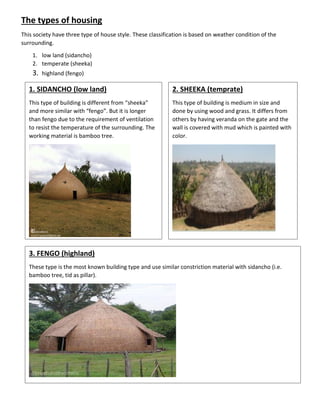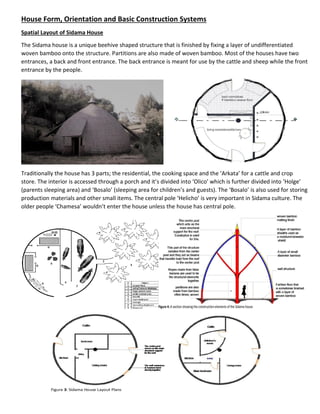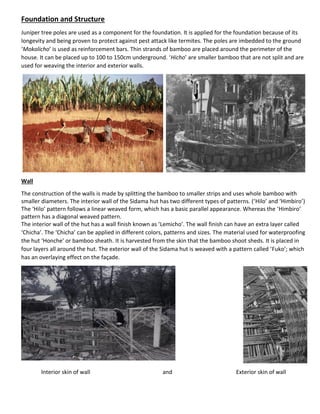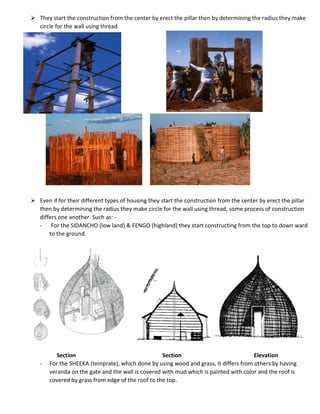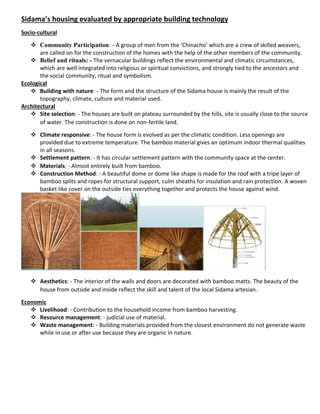1. The Sidama people live in the Southern Nations, Nationalities, and Peoples' Region of Ethiopia. They have three main styles of housing - lowland, temperate, and highland - depending on the climate.
2. Houses are constructed using local materials like bamboo, wood, and grass. Construction begins by erecting a central pole and attaching circular walls. Roofs have a dome-like shape constructed of bamboo strips.
3. Sidama housing has benefits like cultural relevance, environmental sustainability through use of local materials, and economic viability. However, challenges include lack of quality materials and need for improved construction techniques.

